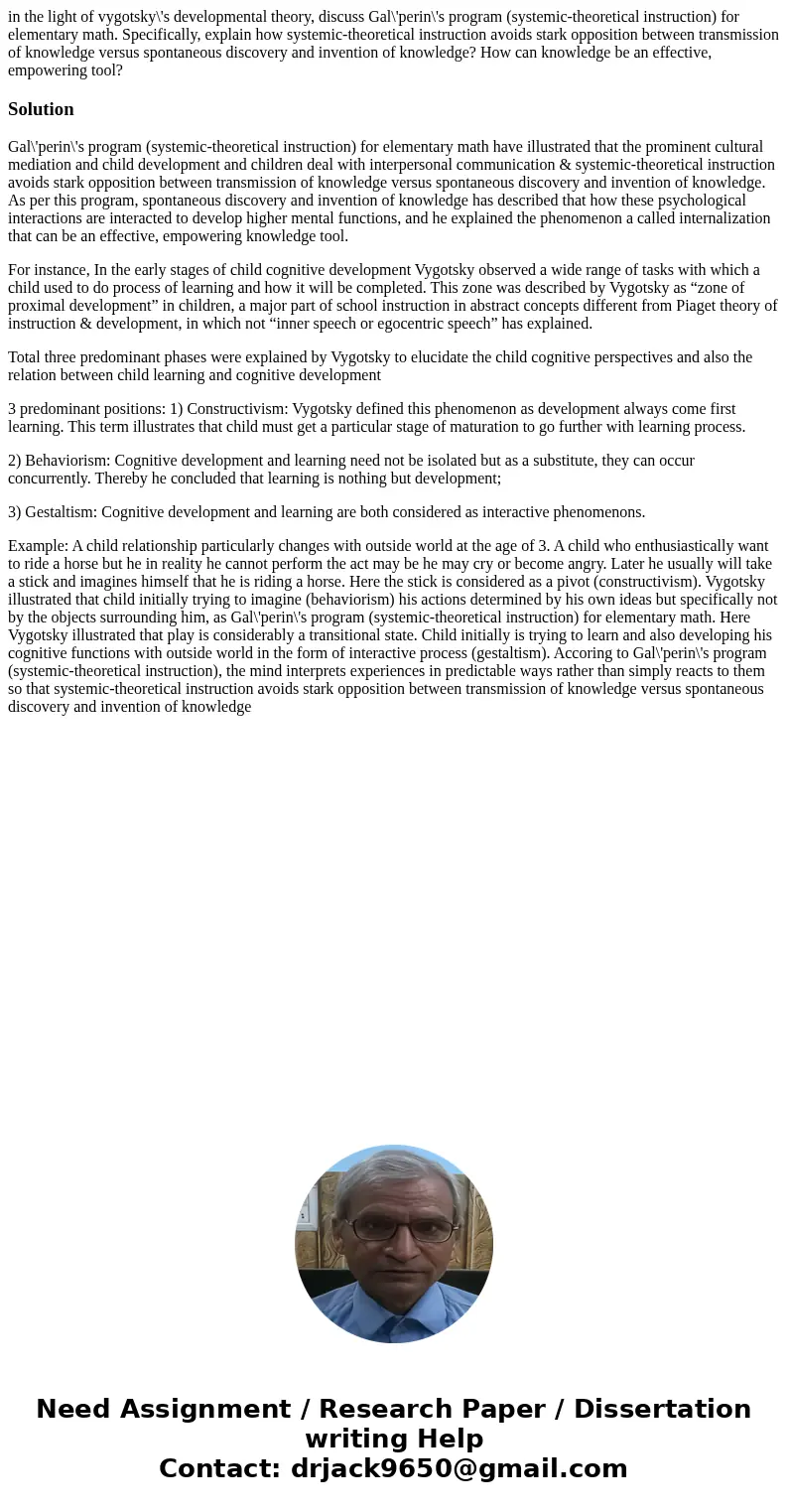in the light of vygotskys developmental theory discuss Galpe
in the light of vygotsky\'s developmental theory, discuss Gal\'perin\'s program (systemic-theoretical instruction) for elementary math. Specifically, explain how systemic-theoretical instruction avoids stark opposition between transmission of knowledge versus spontaneous discovery and invention of knowledge? How can knowledge be an effective, empowering tool?
Solution
Gal\'perin\'s program (systemic-theoretical instruction) for elementary math have illustrated that the prominent cultural mediation and child development and children deal with interpersonal communication & systemic-theoretical instruction avoids stark opposition between transmission of knowledge versus spontaneous discovery and invention of knowledge. As per this program, spontaneous discovery and invention of knowledge has described that how these psychological interactions are interacted to develop higher mental functions, and he explained the phenomenon a called internalization that can be an effective, empowering knowledge tool.
For instance, In the early stages of child cognitive development Vygotsky observed a wide range of tasks with which a child used to do process of learning and how it will be completed. This zone was described by Vygotsky as “zone of proximal development” in children, a major part of school instruction in abstract concepts different from Piaget theory of instruction & development, in which not “inner speech or egocentric speech” has explained.
Total three predominant phases were explained by Vygotsky to elucidate the child cognitive perspectives and also the relation between child learning and cognitive development
3 predominant positions: 1) Constructivism: Vygotsky defined this phenomenon as development always come first learning. This term illustrates that child must get a particular stage of maturation to go further with learning process.
2) Behaviorism: Cognitive development and learning need not be isolated but as a substitute, they can occur concurrently. Thereby he concluded that learning is nothing but development;
3) Gestaltism: Cognitive development and learning are both considered as interactive phenomenons.
Example: A child relationship particularly changes with outside world at the age of 3. A child who enthusiastically want to ride a horse but he in reality he cannot perform the act may be he may cry or become angry. Later he usually will take a stick and imagines himself that he is riding a horse. Here the stick is considered as a pivot (constructivism). Vygotsky illustrated that child initially trying to imagine (behaviorism) his actions determined by his own ideas but specifically not by the objects surrounding him, as Gal\'perin\'s program (systemic-theoretical instruction) for elementary math. Here Vygotsky illustrated that play is considerably a transitional state. Child initially is trying to learn and also developing his cognitive functions with outside world in the form of interactive process (gestaltism). Accoring to Gal\'perin\'s program (systemic-theoretical instruction), the mind interprets experiences in predictable ways rather than simply reacts to them so that systemic-theoretical instruction avoids stark opposition between transmission of knowledge versus spontaneous discovery and invention of knowledge

 Homework Sourse
Homework Sourse